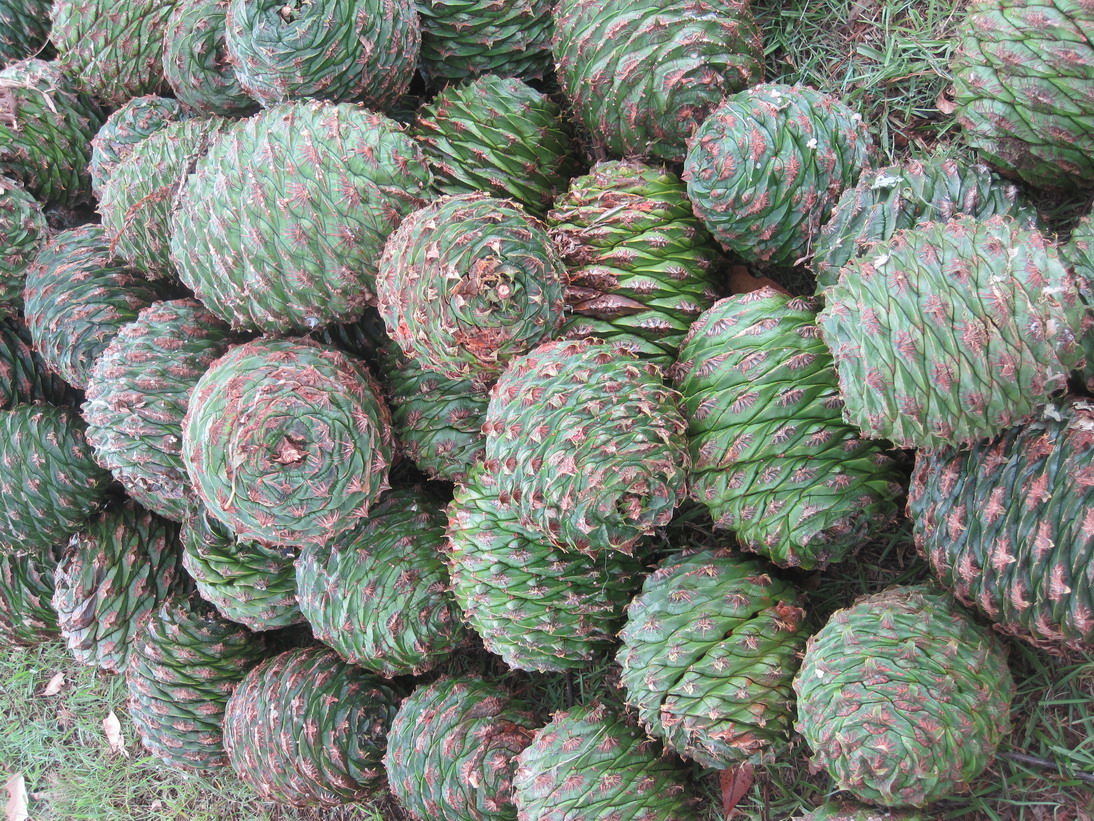Bunya Bonanza
By Jacob Freeman
The east coast bunya-bunya pine originated from the Bunya Mountains in Queensland. The tree was of immense cultural significance to the life and food security of the Aboriginal people of Australia, who traded the seeds along the Great Dividing Range. Bunya trees were marked with the totems of families that planted and passed them down through the generations. The first colonists planted bunya trees on mountaintops and around their manors. The spiky trees have a very distinct shape with rounded tops that splay out like fans. They can be seen from a long distance and therefore helped with early navigation by land and air.
The tree produces a small yield of nuts annually and a bumper crop every three years. These bumper crops where highly valued and traded between families and tribes. Traditionally, the seeds, or nuts, were eaten raw or roasted, and they were stored underground in wet mud, believed to enhance the flavour as well as extend their life. They provided a significant quantity of complex carbohydrates and protein in native diets. Europeans used to boil them with corned beef.

The bunya-bunya will drop pine cones when fruiting. The cones are roughly the size of a human head and can weight 10 to 15 kilos. Once a cone drops, it should be left in a cool, dry place until it breaks apart into segments. Each segment contains a nut in a hard shell. A cone can have 50 to 80 nuts, depending on its maturity.
The most common way to prepare the nuts (once they’re removed from the cone) is to boil them in their shells for 20 to 30 minutes. This will soften the nut and the outer shell. Take a sharp knife and carefully cut through the shell to reveal the nut. (An incision can be made prior to boiling which makes it easier to cut the shell). Once the boiled nuts are removed from their shells, they are ready to eat or use in pesto, gluten-free pancakes, biscuits, nut slices, or grind into a paste. The cooked nut can also be dried out and ground down into a gluten-free flour, which you can freeze for future use.
Once planted, a seed can take up to 18 months to germinate, sending a tap root down. It has the ability to remain dormant until conditions are right for optimal growth. The bunya tree will take 20 years to reach fruiting maturity, but can live for hundreds of years after that.
Learn more about these amazing trees and nuts, along with how to cook them, in the video below.

